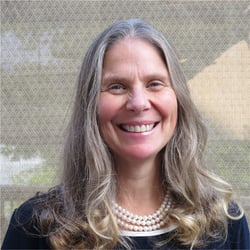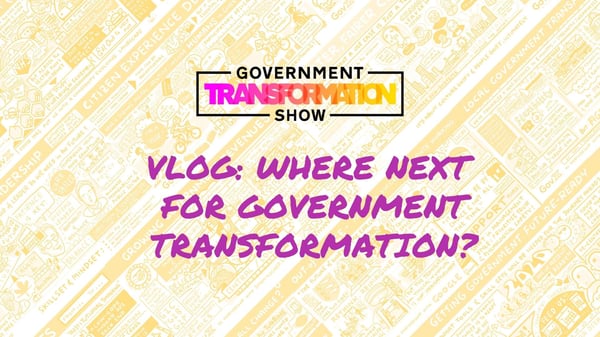Tackling the skills gap in government
Attracting and retaining talent continues to be one of the greatest challenges facing the public sector today, both in the UK and abroad. The issue is starker around highly sought-after digital skills, where competition from the private sector is ferocious and where, unlike the latter, government departments are unable to meet corporate salary offers.

In Canada, the Office of the Chief Information Officer has set up a Digital Community Management Office responsible for leading digital talent initiatives across all government organisations to ensure that every civil servant has basic digital literary skills and that those working in digital roles have access to enhanced training.
Liz McKeown, Executive Director of the Digital Community Management Office at the Treasury Board of Canada Secretariat, spoke to us during the Government Transformation Summit about the skills challenge and how her department is tackling it.
What are the main challenges in recruitment facing the Government of Canada?
I think there are a few of them. Number one is being able to attract markets that we haven't attracted previously. When we think about diversity and inclusivity, we go to the same markets over and over again, and we keep bringing people in that look at things through the same lense.
Secondly, as public sector, we're not attractive. We’re not as competitive as the private sector and people don't have an altruistic desire to work in government. We don't make ourselves sexy for external recruitment. An additional problem is that we make it very difficult to apply for government jobs: the processes don't attract the right people in a manner that makes them want to be in government.
How are you working to make the government’s workforce more representative at all levels?
Where I come from, the Digital Community Management Office, we’re tasked with figuring out how we fill our digital gap. That’s internal skills, but also bringing in new blood to augment the public service. We're experimenting with a new talent platform that takes a look at the end-to-end process of recruitment from a totally different lens. So it’s not so much about trying to fix the existing hiring processes, but starting with something brand new.
We've got an MVP [minimum viable product] that was designed with numerous different communities, including Black communities and Indigenous persons. We then tested small areas of recruitment processes and built on them for other communities. That talent platform is already showing that we've got much greater diversity: we've got in some cases 50% of candidates that are external versus internal, and that’s a massive change.
How do your recruitment and retention strategies support diversity?
That is part of the digital ambition within the Canadian government that comes out from the CIO of Canada [Catherine Luelo]. That speaks to leveraging the digital standards, which includes diversity and inclusivity. That’s the policy that demands that all departments within government do that, but at the end of the day, we still have recruitment gaps. That's when we move to central organisations like ours, where we have those platforms that bring in the right folks and look at those different audiences. But we're still in the early stages of how we modify our processes to bring the right people rather than having to do targeted recruitment.
What are some of the career obstacles that Canadian civil servants face?
In Canada we have a bilingual government, which is a bit unique and a huge challenge. We span five time zones and we are mostly focused in the National Capital Region, in the Ottawa area. If you manage employees or deliver services, then you need to be bilingual, but that’s not necessarily representative of the Canadian population. Many Canadians don't have the opportunity to be bilingual through their primary and secondary education experiences.
The second challenge is around knowing what the right skills are for your next step in the process. Because we work in silos, like in every government across the world, people don't understand what are the skills that they need for their next opportunity and in order to progress in their careers - do I need to expand my artificial intelligence knowledge, do I need to do some projects to work on my agility services? And once that gap is recognised, how do I go about improving those skills?
Part of the work we do at the Digital Community Management office is identifying the skills necessary to move from one level to the next, and then pointing people to the right learning opportunities for it.
How do you empower employees and ensure that they are listened to and can realise their full potential?
You have to empower employees so they don’t walk out the door. Leave them alone and get rid of administrative burdens, give them time to innovate and try things to realise results. Then people will feel satisfied with what they’ve done and the results they’ve delivered. They will have a connection to the culture of the organisation.
What are the most in-demand skills in the Government of Canada?
I’m going to break that into three different categories. Firstly, in the general public service, people don’t understand what it means to design services for end users: we design services in siloes and don’t think about them end-to-end. That refers to leveraging our digital standards and digital behaviours.
Secondly, when we get into digital practitioners, the most in-demand skills are cybersecurity, cloud and automation, whether that’s machine learning or artificial intelligence. Lastly, we’ve got the whole issue of skills in the leadership space: how do you lead in that Westminster-style government that aligns with digital standards and digital behaviours?
How should the public sector compete for talent?
I think first you need to make it easy. If you want to attract people in the first place, and then retain them, they must have a really great introduction and onboarding experience. There's a direct correlation between retention and the onboarding experience.
Once you’ve made that process easy, then you can appeal to people's altruistic desire to do better government and create better services for citizens. But if these candidates have already been tainted by a negative onboarding experience, then that altruistic desire is not going to be there.
There are also creative ways to bring talent in that don't necessarily tie to a long-term lower salary. We no longer need to be hiring people for 30 years, there are executive interchanges, time outside of government… We can bring people in for shorter periods of time so they can go outside of government and maybe get more money as well.
What does great leadership look like for you?
It’s really simple: great leadership to me is one that has the vision of what a really great modern public service looks like, behaves like someone who delivers great services and doesn't bring paper to a meeting in an organisation that delivers digital services, for example. It is also leadership that thinks about how they remove the obstacles in that delivery rather than creating extra demands on a workforce that is already overstretched.






